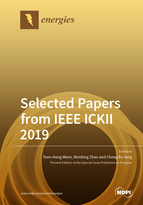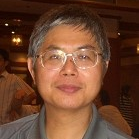Selected Papers from IEEE ICKII 2019
A special issue of Energies (ISSN 1996-1073).
Deadline for manuscript submissions: closed (30 November 2019) | Viewed by 44119
Special Issue Editors
Interests: IOT devices; photovoltaic devices; STEM education
Special Issues, Collections and Topics in MDPI journals
Interests: fault-tolerant computing; computer and network security; peer-to-peer and grid computing; performance evaluation of distributed systems
Special Issues, Collections and Topics in MDPI journals
Interests: electronic ceramics; high-frequency communication materials; applied science
Special Issues, Collections and Topics in MDPI journals
Special Issue Information
Dear Colleagues,
The 2nd IEEE International Conference on Knowledge Innovation and Invention 2019 (IEEE ICKII 2019) will be held in Seoul, South Korea on 12–15 July 2019, and it will provide a unified communication platform for researchers in the topics of information technology, innovation design, communication science and engineering, industrial design, creative design, applied mathematics, computer science, electrical and electronic engineering, mechanical and automation engineering, green technology and architecture engineering, material science, and other related fields. This Special Issue on “Selected papers from IEEE ICKII 2019” is expected to select excellent papers presented in IEEE ICKII 2019 on topics in energies. This Special Issue will provide related scientific research, technology development, and policy and management studies. It will publish reviews and regular research papers. Our aim is to encourage scientists to publish their experimental and theoretical results in as much detail as possible. The full experimental details must be provided so that the results can be reproduced. We invite investigators to contribute original research articles as well as review articles to this Special Issue. Potential topics include, but are not limited to:
- Energy fundamentals;
- Primary energy sources;
- Secondary energy sources and energy carriers;
- Energy exploration;
- Intermediate and final energy use;
- Energy conversion systems;
- Energy policy;
- Exergy;
- Energetics;
- Energy research and development.
Prof. Teen Hang Meen
Prof. Dr. Wenbing Zhao
Prof. Dr. Cheng-Fu Yang
Guest Editors
Manuscript Submission Information
Manuscripts should be submitted online at www.mdpi.com by registering and logging in to this website. Once you are registered, click here to go to the submission form. Manuscripts can be submitted until the deadline. All submissions that pass pre-check are peer-reviewed. Accepted papers will be published continuously in the journal (as soon as accepted) and will be listed together on the special issue website. Research articles, review articles as well as short communications are invited. For planned papers, a title and short abstract (about 100 words) can be sent to the Editorial Office for announcement on this website.
Submitted manuscripts should not have been published previously, nor be under consideration for publication elsewhere (except conference proceedings papers). All manuscripts are thoroughly refereed through a single-blind peer-review process. A guide for authors and other relevant information for submission of manuscripts is available on the Instructions for Authors page. Energies is an international peer-reviewed open access semimonthly journal published by MDPI.
Please visit the Instructions for Authors page before submitting a manuscript. The Article Processing Charge (APC) for publication in this open access journal is 2600 CHF (Swiss Francs). Submitted papers should be well formatted and use good English. Authors may use MDPI's English editing service prior to publication or during author revisions.
Keywords
- energy fundamentals
- primary energy sources
- secondary energy sources and energy carriers
- energy exploration
- intermediate and final energy use
- energy conversion systems








